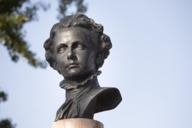
King Ludwig II of Bavaria, also known as the Fairytale King, was famous for his eccentricity. He lived and worked at night, and slept during the day, his daydreams giving rise to elaborate palaces and innovative devices that were both visionary and at the cutting-edge of 19th-century technology. Here are just five of his amazing inventions:
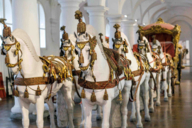
Ludwig II enjoyed moonlit sleigh rides through the forests and fields that surrounded his palaces. The most splendid of his vehicles was the gala sleigh, decorated with cherubs and built in 1872. The sleigh was suitable for all kinds of terrain and could be fitted with both runners and wheels.
The cherubs – nude, childlike angel figures – are the figureheads of the sleigh and bear a number of the insignia of authority: sword, sceptre, laurel wreath and a crown on the very top. The crown and the two side lamps lit up – which was an absolute sensation in Ludwig’s day, especially because from 1879 onwards, the light was not produced by candles, but by light bulbs.
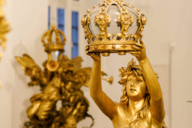
The sleigh was the first electrically lit vehicle in Bavaria – if not the world. The lights were powered by a chromium and sulphuric acid battery located under the seat.
Where can you see the sleigh?
In the Marstallmuseum (carriage museum) at Schloss Nymphenburg
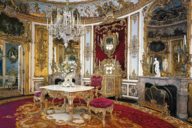
Ludwig enjoyed fine dining and some say he was very greedy. Because he had very bad teeth, the king preferred meat that had been cooked for a long time, and also enjoyed soup, turtles and oysters. Of course, Ludwig’s mealtimes did not fall in with the typical daily routine.
Ludwig sometimes ate lunch as early as six o’clock in the morning, and he preferred not to have people with him when he ate, even banishing servants where possible.
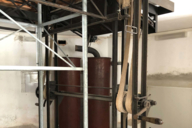
That is why both Schloss Linderhof and Schloss Herrenchiemsee had dining tables that could be lowered. By means of a mechanical lifting system, they could be lowered through the floor and down to the storey below to be set, and then raised back up for the king to begin his meal.
Where can you see the so-called “wishing tables”?
In Schloss Linderhof and Schloss Herrenchiemsee
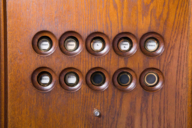
Even kings have to disappear for a short while. At Neuschwanstein, Ludwig II spent his toilet time on a throne. It had an automatic flush, which was an incredible advance at a time when most of the population was still squatting on latrines. Ludwig could wash his hands with warm, running water, which was also highly unusual.
The only thing he couldn’t do while on the loo was talk on the phone; he had to go to another room in the castle to do that. And the line only went as far as neighbouring Hohenschwangau.
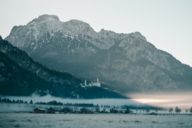
However, the very fact that he was able to use a device to speak to others who weren’t within shouting distance must have seemed like magic to his simple subjects.
Where can you see the toilet?
At Schloss Neuschwanstein
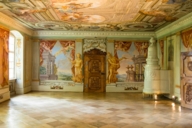
Ludwig II did not have to freeze on chilly autumn or winter days. Some of his palaces were equipped with a calorifère-based heating system – a unique form of central heating that was highly modern at the time. This is how it worked: in a central room was the furnace, from which hot smoke was channelled off by a number of pipes.
The pipes heated the air in the heating room, and the heated air was then directed to the rooms to be heated via a number of shafts. The heating room also contained several cylindrical water tanks, which ensured that the warm air did not become too dry. This was to make sure that Ludwig did not develop a cough when he had to turn the heating on.
Where can you see the heating system?
In Schloss Neuschwanstein and Schloss Herrenchiemsee
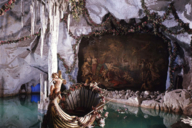
Ludwig II was also quite cosy in his artificial Venus Grotto beside Schloss Linderhof. Tiled stoves were recessed into the stalactites of the grotto, while the water in the lake could be heated to a pleasant temperature to allow the monarch to bathe in comfort. He could also adjust the lighting to suit his mood:
Wagnerian-style, red, or blue like the famous Blue Grotto in Capri – there was no shortage of options. The lighting system in Ludwig’s cosy cave was phenomenal. The power supply behind the system was particularly impressive: Ludwig commissioned engineers to install 24 generators, each of which supplied power to one of the lamps in the grotto. In other words, the system was Bavaria’s first electricity plant.
Where can you see the grotto?
Beside Schloss Linderhof